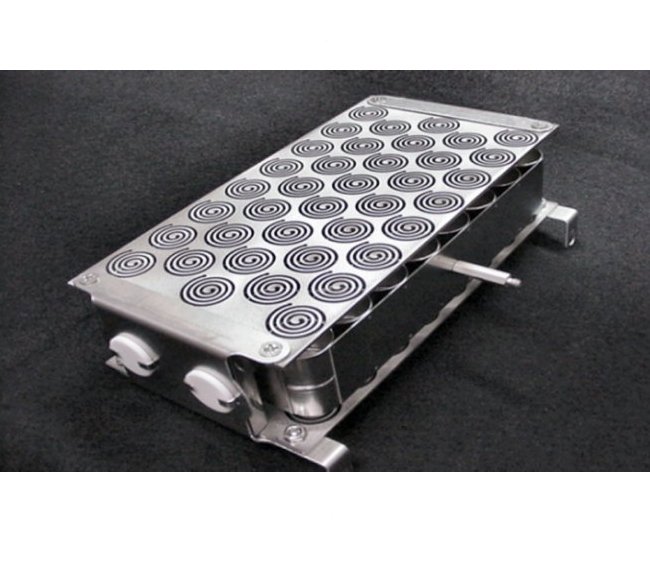book > chapter 4
Chapter 4
Summary Vacuum pumps and pumping systems
The chapter ‘Vacuum pumps and pumping systems’ extensively discusses all nowadays commercially available pump principles at the hand of important qualities, such as throughput, pumping speed, ultimate pressure, compression ratio, gas type dependency and working range. In addition, more specific characteristics of a particular type of pump are discussed in the section treating this pump. Since the 1980’s the pump palette has made a clear shift from wet to dry pumps. With ‘wet’ we mean pumps which need a liquid for their pumping action. Liquids in pumps because of several reasons (unsurmountable contamination problems, increasing costs of maintenance and ever higher environmental costs because of stricter regulations) became impermissible in various applications of vacuum in research and industry and gave a great impetus to the development of dry pumps. Transition from wet to dry pumps nowadays is considered as an economically attractive alternative. With respect to the Dutch version of this book from 2000, the chapter contains several major changes and significant innovations. In summary, the chapter is extended with attention to the multi-stage Roots pump, which in the past decade has rapidly developed into a valuable alternative to the claw pump and is able to discharge to atmospheric pressure. As for the claw pump, new insights are incorporated about the use of an integrated combination of Roots and claw stages. Concerning the screw pump, attention is paid to the tapered pitch as a solution to reduce the heat generated by isochoric compression. The section ‘Molecular pumps’ is extended with a paragraph on the molecular drag pump (MDP)/side channel pump combination, consisting of a Holweck type molecular drag pump and multiple stage miniature type of side channel blower. This pump combination also appears to be able to discharge against atmospheric pressure. The required knowledge regarding the side channel blower is added to the section ‘Dry rotary pumps’. Finally, the section ‘Sputter-ion pumps’ is supplemented with information on the so-called ‘Galaxy’ and ‘StarCell’ cathode structures to increase the pumping speed for noble gases.
Some figures in Vacuum pumps and pumping systems
Contents Vacuum pumps and pumping systems
4.1 Introduction 160
4.2 Definitions 163
4.3 Compression processes in transfer pumps 166
4.4 Liquid-sealed rotary pumps 168
4.4.1 Liquid ring pump 168
4.4.2 Rotary vane pump 175
4.4.3 Gas ballast 181
4.4.4 Oil-sealed multivane pump 189
4.4.5 Rotary-piston pump 190
4.4.6 Oil-sealed rotary pumps in practice; pump accessories 193
4.5 Liquid jet pump 198
4.6 Vapour-stream pumps 199
4.6.1 Steam jet pump 208
4.6.2 Diffusion pump 211
4.6.3 Pump fluids 223
4.6.4 Diffusion pump system operation 225
4.6.5 Hints and safety measures for diffusion pump systems 228
4.6.6 Vapour booster pump 229
4.7 Oscillation pumps 230
4.7.1 Piston pump 231
4.7.2 Diaphragm pump 233
4.8 Dry rotary pumps 235
4.8.1 Side channel blower 235
4.8.2 Oil-free multivane pump 239
4.8.3 Scroll pump 240
4.8.4 Roots pump 243
4.8.5 Claw pump 260
4.8.6 Screw pump 268
4.9 Molecular pumps 270
4.9.1 Molecular drag pump (MDP) 272
4.9.2 MDP/side channel pump 280
4.9.3 Turbo molecular pump (TMP) 285
4.9.4 Design and engineering aspects of turbo molecular pumps 293
4.9.5 Turbo molecular pump system operation 301
4.9.6 Hybrid molecular pump (HMP) 303
4:10 Capture pumps 307
4.10.1 Sorption pump 308
4.10.2 Getter pump 318
4.10.3 Sputter-ion pump 325
4.10.4 Cryopump 335
4.10.5 Cryopump system operation 348
4:11 Pump selection 351
4.11.1 Quantity of gas (throughput) Q to be pumped 351
4.11.2 Desired operating pressure p 352
4.11.3 Required pumping speed S 353
4.11.4 Economic aspects 353
4.11.5 Pumping aggressive, toxic or explosive gases and vapours 354
4.11.6 Pumping large amounts of gas 356
4.11.7 Obtaining ultra-high vacuum 358
exercises
















